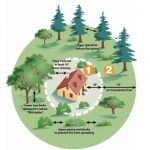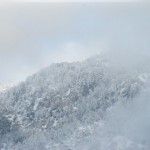Despite several conservation groups attempting to get the Monarch butterfly listed as a federally endangered species, in December 2020, the U.S. Fish and Wildlife Department rejected the groups’ 2014 petition.
“We conducted an intensive, thorough review using a rigorous, transparent science-based process and found that the monarch meets listing criteria under the Endangered Species Act. However, before we can propose listing, we must focus resources on our higher-priority listing actions,” said U.S. Fish and Wildlife Service Director Aurelia Skipwith.
FWS said the butterfly’s listing as a threatened and endangered species is warranted but precluded by work on 161 species on its higher-priority work plan, including “plants, insects, freshwater mussels, fish, birds and mammals.”
FWS did write that for more than 20 years, “scientists have noted declines in North American monarchs overwintering in Mexico and California, where these butterflies cluster.”
It estimates that the eastern Monarch population fell from 384 million in 1996 to 14 million in 2013 while the western population in California dropped from 1.2 million in 1997 to fewer than 30,000 in 2019. The eastern population made a comeback in 2019 of 60 million.
“The Service itself has estimated up to an 80% probability of population collapse for eastern monarchs within 50 years and a 96-100% probability for the western population,” wrote the Center for Biological Diversity following the decision.
“Monarchs are threatened by pesticides, global climate change, sprawl, and illegal logging of the forests where they migrate for the winter. They are also threatened by mortality during their migrations from roadkill and habitat fragmentation,” according to CBD.
Even Barbara Kingsolver’s 2012 novel “Flight Behavior” focuses on the Monarch butterflies’ threatened existence.
Monarch Watch (monarchwatch.org), a nonprofit out of Lawrence, Kansas, leads efforts from Canada to Mexico to protect and increase Monarch butterfly populations.
One of the nonprofit’s best resources for those increases is volunteers in these three countries who set up Monarch Waystation Habitats. As of Oct. 4, 2021, Monarch Watch had 36,863 waystation habitats registered on its site. The primary diet of a Monarch butterfly is milkweed and that is primarily what the habitats offer.
Two of those volunteer habitats are located in Pine Cove.
“We [Pine Cove Water District] are a registered Monarch habitat,” said Office Manager Becky Smith. “We plant milkweed, which is the only source of food that the Monarch caterpillars will eat.”
According to Monarch Watch, “Each fall, hundreds of millions of monarch butterflies migrate from the United States and Canada to mountains in central Mexico where they wait out the winter until conditions favor a return flight in the spring. The monarch migration is truly one of the world’s greatest natural wonders, yet it is threatened by habitat loss at overwintering grounds in Mexico and throughout breeding areas in the United States and Canada.”
Smith said, “The Monarchs stop here on their way to Mexico and they lay eggs on the milkweed — hundreds of eggs … we are helping to build the numbers.”
At the last PCWD Board of Directors meeting in October, General Manager Jerry Holldber reported that the office’s habitat “broke all records. We had close to 150 butterflies.”
One of the directors at that meeting was Rose Venard. She has the only other registered waystation habitat on the mountain.
“This season/year has been very successful in helping to save our beautiful Monarchs,” said Venard. “When the caterpillars nearly decimated my milkweed plants, of which I had about 8, I was able to collect many of them and transport them the short distance to the lush and virtually untouched garden at Pine Cove Water District, with Becky Smith’s permission.
“Those caterpillars thrived and emerged within the next couple of weeks, at which time butterflies began laying eggs on a daily basis over there … and my plants got a chance to regrow and host more as well.
“Overall, I would say it was a very good year. If I had to estimate the numbers, I would say I was able to host about 40 successful eclosures …” (An eclosure is the emergence of the butterfly from the pupa case.)
Unfortunately, a habitat will not save many of the butterflies. “Out of the hundreds that we had this year, we’re lucky if 50% fly off,” said Smith. “They get infected with a fly larva and most don’t make it.”
Waystation registration costs $16. Apply for one at https://shop.monarchwatch.org/product/Waystation-Certification-Application/190004. An applicant will need to choose which plants they are providing on the application form. Monarch Watch also sells milkweed plants.










